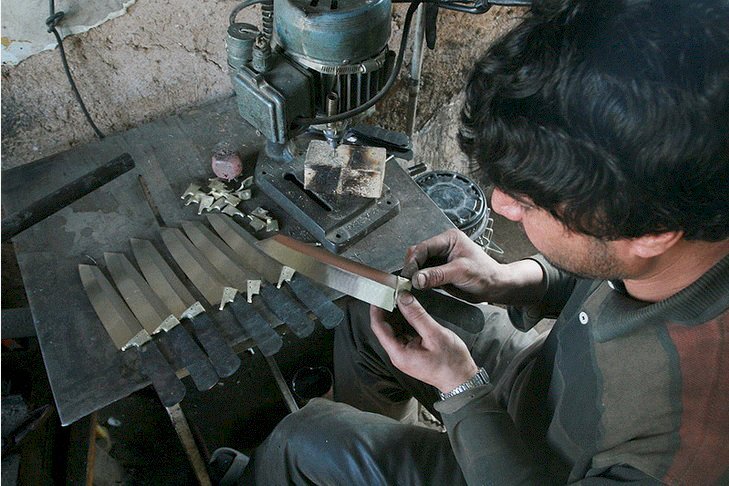Hand-made knives, most popular souvenir of Zanjan

TEHRAN – Knives made by hand are one of the most famous souvenirs of the northwestern city of Zanajn.
Zanjan knives are considered one of the most authentic handicrafts of the region. Their reputation and fame extend far beyond the borders, with talented artisans working in this field.
During the Achaemenid period (c. 550– 330 BC), Zanjan was a weapon-making hub. There are a number of factors contributing to the knife industry in Zanjan, including its geographic location, its role in various historical wars (both before and after the Islamic era), its proximity to adjacent provinces, its location at the center of Eastern and Western civilizations, and its proximity to the central plateau.
In addition to the availability of raw materials, Zanjan’s rich mines of iron and copper also contributed to its prominence as a knife-making center.
However, there is little about the history of this field of handicrafts, but according to the historical documents as well as travelogues, it can be concluded that from the 17th century, Zanjan was a city where knives, swords, and daggers were produced immensely and a lot of knives making workshops were installed.
Due to their design, cut, diversity, and durability, Zanjan knives have been the most successful among the handmade products in other cities.
The most important material for handmade knives is iron. The handle is made from materials such as elk horns, seashells, wood, fiber, or ivory. The knife makers usually carve their names into the blade. Gems, jewelry, filigree, pieces of seashells, and ivory are some of the ornate they add to their creations.
The most important tools used by the cutlers are hammers, sledgehammers, scissors, and kilns. To make a knife, first, the master heats the iron in the kiln. After it reaches the proper degree, it is forged into knife, sword, and dagger blades by the impact of the hammer. Then he skillfully creates the handle using materials like horns or ivory and attaches it to the blade. Finally, the blade is ground and chrome plated.
The knife makers of Zanjan usually carve their names into the blade. Gems, jewelry, filigree, pieces of seashells, and ivory are some of the ornaments they add to their products. From small decorative knives that are used as key chains to large swords, a wide range of products are made in the workshops.
The handle provides a chance for the artistry of their makers, who try to add to their beauty and uniqueness as much as possible. Characteristics such as spring-assisted-like opening, high sharpness of the blade and very good grip are some of the traits of Zanjan knives.
However, nowadays the art of making handmade knives, which once flourished in Zanjan, is being fallen into oblivion.
ABU/AM

Leave a Comment